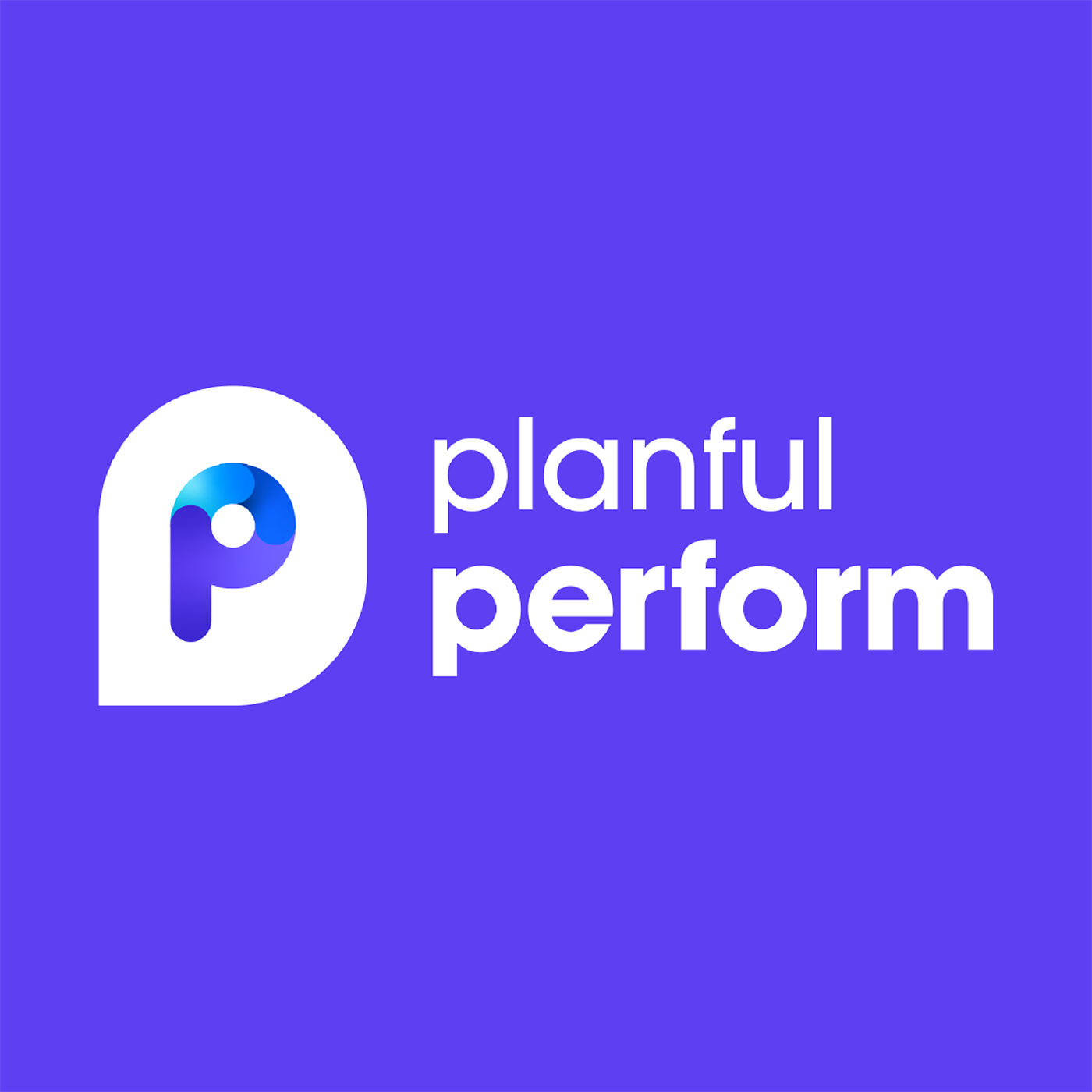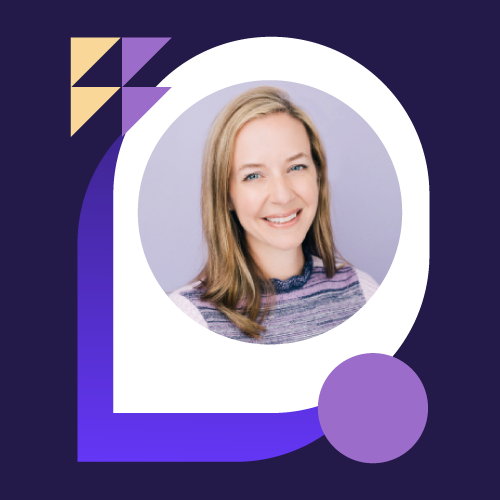Creating BOARD Books, Not Bored Books with Jordan Akers
- 0.5
- 1
- 1.25
- 1.5
- 1.75
- 2
Jordan Akers: Perfect. Thank you, Ed. So like I mentioned, my name is Jordan Akers, solutions consultant here at Planful. And before we get started, I want to take time to talk about a little bit of a story and why I'm so passionate about this topic. So I'm an avid reader. I love to read. I usually read for escapism. So it's usually science- fiction, high fantasy, all that really nerdy stuff. But every now and then, I'll incorporate a self- help book or something that I can learn from. And recently, I started Getting Things Done: The Art of Stress- Free Productivity by David Allen. Now in this book, he talks about how lingering tasks reduce your productivity. And when you think about that specific aspect when it comes to the reporting, there's always lingering tasks. You always saying," Hey, I got to remember to send out that reporting package before I leave today." Or," I need to update my CFO's dashboard." Or maybe something changed within a system and I need to go update that board book so the data integrity is there and it's showing appropriately. Now in his book, he has a very simple methodology of writing your tasks down so they're not taking up any of your brain space and you can focus on the task at hand. Now I want to take it a step further, I want to say, why not just remove those tasks entirely? Let's automate those repeatable processes so they don't have to be lingering tasks? Not only will we be saving time for you, but we'll also be allowing you to fully divert yourself and your attention to the task on hand. So with that, we'll be covering a couple of things today. I know the topic is around board books, but we will be talking about all reporting repeatable tasks when it comes to reporting. I'll touch really quickly here on the continuous challenges, what we can do to help you accelerate that reporting process, and then we'll get into the fun stuff, which is the demonstration. Now just really high level, what is a board book? It's essentially an accumulation of different data points, financial and nonfinancial, which could be operational or KPI. They typically cover a certain frequency, meaning they're going to be distributed on a weekly, quarterly, or a monthly basis. There's essentially three main processes to build this out. You have your updating your numbers, which is aggregating different bespoke data sets either from systems or from individuals, collecting it, putting it in a master sheet, doing cross sheet formulas to produce it. There's some revised narrative that tells a story around the values, and then there's the publishing. Now we all know the updating numbers is a very cumbersome process, this takes a lot of time and manpower to produce these. I would also make the argument that the publishing aspect is something that is rather time- consuming as well. You have to remember when the appropriate time is to send it out? Who to send it out to? etc. Now we hear talking to our clients that this takes 4 to 12 hours to prepare this on average per cycle. So if this is something you're doing weekly, quarterly, this time really adds up, this is taking you away from those more value- add topics. So what Planful has done is we've gone in and we've produced a streamlined way to produce these reports. I know we've talked about Excel in the Microsoft Suite and the drawbacks that it provides. But by us acknowledging that, we were able to go out and build an application that gives you the familiarity of Excel, that gives you the efficiency of a cloud- based application. You can work in a familiar environment, and because of that, that creates a self- service application. There's no coding or proprietary language you need to learn, this is owned and managed by finance. And the last one is the slicing and dicing. These reports all too often are static reports, but they need to be dynamic. We want people to be able to drill into the data, answer their own questions, opposed to you being the one- stop gap for the whole company, it's feeding out reports, taking questions, and creating new reports. We want to automate that whole process for you. Now, from those features, we see a 70% reduction in time, now that's a lot of happy hours that you're going to be able to join now, right? Well, realistically, we all have those lingering projects that we haven't been able to get to you yet. These are high value- added projects. And if we can reduce the man time it takes to produce the reports you can now use that time on these secondary projects moving forward. So without further ado, we're going to get into the demo. We have three main things we're going to touch on, automating repeating processes, ease of use owned by finance. And the last one is we meet your needs, one size does not fit all. The reporting requirements for a publicly- traded company are vastly different than a privately held. So I'll make sure to show you all the different reporting capabilities and you can use a subset or all depending on what your requirements are. So we'll go ahead and jump to the demo. So the first thing we're going to be seeing here is what we hear the most, the number one requirement and that's dashboards. You'll see here that dashboards almost always are a subset accumulation of different bespoke data points. So you'll see on the top right I have my actuals plan versus forecast, that actuals is coming from a GL system. The bottom left, I have my FTE count, so that's data coming from an HRS system. And right above that, we have average sales price, this is information coming from your CRM tool. Now the point I'm trying to make here is we're system agnostic. We can connect to any quarter system, we can pull on that data so we can give you a singular ecosystem to act as your singular financial source of truth. Now, the next requirement when it comes to dashboards is these need to be dynamic. We don't want to just give people a screenshot and then them not be able to understand or drill into the data. So on our top right, we'll see we have this anomaly within my forecast. I can very easily click and go from a quarterly to a monthly view. I can right click and drill through and see the transactional level data. So I'm now exposing individuals to answer their own questions essentially. I have this$2. 5 million and I also have a note. So this means I don't have to go and chase down that disparate Excel file or reach out to that individual to understand this anomaly, I actually have that information right here for me to grab. This is removing that swivel screen environment, me having to go to different systems or different individuals, pulling down historical files to go and understand this data. It is now right here in a singular location for me. Now creating dynamic reports is really important and drilling down is the first step of that, but second is going to be the dimension drivers. So up here, we'll see, I'm looking opex U. S. sales, these are user- centric dashboards. And what that means is when the individual logs in this dashboard is dynamically going to change depending on their permissions on their data sets. So right now this is a sales view, but if a marketing person came in, this would actually automatically shift to a marketing view. And what that means for you is that you don't have to create this singular dashboard 15 different times, you create it once, distribute it to each department head and they have immediate access to see what's applicable to them. Next is going to be ease of use. These dashboards are completely configurable. And like I mentioned, there's no coding or unique language you need to know. I can just simply drag and drop if I want a new chart. I can move these around from dragging and dropping as well. If I want to edit this, this is all dimension- based. I have my filter dimensions at the top, and then I have my X and Y axis. These are very easy to click and select on those different dimensions to pivot off of that data however necessary. Now, the next aspect of automating that reporting process is going to be rolling it forward. Now rolling forward data in Excel is always an extremely cumbersome process. You're pulling down new data sets, you're rewriting formulas to incorporate the new dates. And a lot of times those formulas can break and you lead it to version control as well. So we just leverage our substitution variables, these are commonly used throughout our application time and time again, because there's such a simplified version to manage our roll forward. If I wanted to roll this forward from April to May, all I have to do is go and select that new month and I'll be able to do so. You can do it on a report by report or dashboard basis, or you can roll forward by an entire scenario. That data already exists within Planful because like we mentioned, we're system agnostic. It's going to change your forecasted to your actuals for that new month and roll everything forward for you. Now dashboard is obviously just one aspect of reporting that we need. The other one is going to be more financial based, your financial statements, balance sheet income statement, and then also variance analysis as well. Once again, this is a very repeatable process. These are typically packages that are being dispersed at a certain cadence. We obviously have the capability to do that as well. So we can create all of your standard financial statements and your variance analysis, a lot of great capabilities of being able to create variance analysis across different scenarios. We also have when we think about repeatable processes, our report collections, and that's a pretty self- explanatory title, right? Report collection is essentially a collection of different reports that you get to distribute. Once again, though, we're just leveraging our substitution variables. So we're automating this as much as possible. We decide our timeframe, we're looking at our 2021 plan and our specific quarter, and I can go ahead and run this. What's most important about this is we can actually automate the distribution as well. So if this needs to be sent out on the last Friday of the month, we can schedule that. And no longer is that going to be a lingering task that's distracting you from your current task on hand. We'll completely remove that from your plate. Working along here, we just have to select the specific reports we want to create. So we're using a balance sheet working capital income statement. And down below, we just define the dimensions that I want to look at those reports at. So I'm specifically looking at my balance sheet from a United States entity consolidated currency year to date perspective. I'll define that for each one of my individual reports. Now you can take that a step further and we can use what we refer to as bursting. So I'm doing a regional burst here. I have two different reports, I'm breaking it out regionally so I can look at that from a consolidated United States, Canada, and Mexico perspective. Once again, this is a scheduled report, we're looking at about eight different reports here. But the effort for me to create today would be aggregating different data sets, putting it into Excel files, distributing it via email, redistributing, which leads to version control. That entire process is going to be automated for us moving forward. Within our settings, you have the three standard formats that anyone is going to want to receive this in an Excel PDF in Google sheet, so once again, we can meet the individuals where they're comfortable. And dow below, we can just do some really simple formatting to kind of ease the marketing team. We can put in some logos, we can add some headers and we also get an automated hyperlink table of contents. Now that fact might seem small, but all of us have created table of contents in Excel and PDF and it's time- consuming. When we really think about saving, even five minutes on these repeatable processes, over time that really starts to add up to a significant amount of time. And the last thing we have is simple distribution. Now we couldn't make this any easier. You obviously have the capability of distributing to Planful users and groups, but you can also distribute to people outside of Planful. People that never have and never will log into Planful you can still share these repeatable processes with them. So we do not limit you on who you can distribute this to and this is a completely automated process for you moving forward. Now, taking some time to pause here, the title of my presentation is around board books, which we haven't touched on yet, right? And the reason being is because board books really have to reside in a singular location being PowerPoint. We need to be able to provide a more formatted version with that narrative around it, and like I mentioned earlier, that means there is a reliance on the Microsoft Suite. But we've gone ahead and we've built onto that application. We've done so using our capability called Spotlight. This allows us to tap directly into our Planful database and now pull down numbers from Planful. When we look at this slide deck, all of these values in a normal Excel presentation based environment would be copied and pasted over. It's an extremely manual task and there's a lot of risk in that process as well. Nobody wants to be that individual that goes into a board meeting and has the wrong numbers represented because they weren't aware that there was a last minute change in the GL that affects the numbers, or they forgot to do a copy and paste update on a value that they didn't know existed. So all of these data points are automatically going to update for me, all I have to do is hit the refresh button. Even when we look at a slide like this, that is charts, graphs, tables as well, these are dynamic. Once again, in a standard presentation, this is a static view. These are images that are being cut and paste from Excel over. I can now actually drill in, change these dimensions so we can pivot off of our data and be more responsive about questions within meetings. And when we think about those questions that do come up in these meetings, they're inevitable. You look at these values, they say," Wow, there's an 8. 43% higher than expected." And they're going to ask you questions around that. And to your credit, you're going to know the answer to a lot of these questions, but some of the values, you're not going to have the knowledge around. And that would typically lead to you having to break from the session, go create some additional reports, pulling down data and then reconvene to talk about it. That's a lot of wasted time, we already have everybody together let's just answer the question on hand. So instead of me having to go back to a swivel screen environment, all I have to do is simply hit analyze in Excel. That's going to immediately pop me over into an Excel file and it's going to give me the intersection of where that data point resides in our Planful database. This is giving us that data integrity, letting us know the data that we're looking at in the presentation is accurate because we're automatically connected to our core systems. Now this once again, common theme, this is dynamic as well. I can drill down, I can expand this information, I can see what contributed to this variance. There's so many great tools here within Spotlight that you can leverage. If you're familiar with pivot tables, most of us are, you can just start creating a different view here. We can do an actual verse variance immediately just within the matter of seconds to provide that secondary view for some additional information. So we're just taking our actuals versus our 2021 forecast. And in a couple of clicks, I immediately have all that data point that resides within our Planful database. So once again, it's giving us that familiarity of Excel, but it's giving us the power of a cloud- based environment. Now, the next question that always comes up from this is saying great we understand where that variance is and what led to it, now let's do some assumption- based drivers off of it. What happens if we just cut that down by 5%? Well, once again, that's going to be a task of you having to go create some what- if statements to be able to provide that information. But since we're tapped into the Planful database, I have all of these great reports that I've already created and I've already leveraged that I can access right here. I have this top down adjustment that allows me to come in and do that top- down adjustment automatically. So I can shave off that 5%. All I have to do is hit break back and do a decrease of that 5% and run that calculation. Now you can see here, I'm running that based off of their current values so I'll allocate appropriately. I could allocate equally, I could reference account and I could also hold dimensions constant. So if we're in a revenue- growth environment, so we want to hold sales and marketing constant, but we want to reduce 5% all the other accounts, we can actually define that, and this will decrease that 5% for us automatically. So, once again, it's allowing us to make these decisions and understand these data points right then and there as opposed to having to break apart and reconvene. Now, this data point has automatically updated for me, this is going to push directly back into our Planful database. Now, from here, I can come back into my presentation. I can simply refresh this data and we'll see the updated value points. So this is really removing a significant amount of not just the labor that goes into this, but also giving you that confidence in your data. It's assuring the data integrity and removing the requirements of us today, having to tie out these individual data points. These presentations, these reports, they essentially become byproducts of all the work you've already done in Planful. You've already validated the data points, you've already built off of that data, why not just leverage that same data instead of pulling it down disparately and having to re- aggregate time and time again? Now we have one more area that I want to touch on, the final area of reporting that I want to show us today. Like I said, every organization has different requirements when it comes to reporting so I want to make sure to show all the capabilities. Here, we just have a simple financial dashboard. Now to me what a financial dashboard is, it's essentially a combination of all the different things we already touched on today. So you're going to have your dashboards, you're going to have your tables, your income statements and balance sheets, but you're also going to have the formatted view of Excel. So here really quick, I just have a high- level dashboard that maybe my CFO is looking at every week, every month. And instead of me having to send them a new one, we're just once again leveraging our substitution variables. So when it's time to roll forward from June to July, all I have to do is select that new member and it's going to automatically roll forward and update for me. We're going to see July data change and now show us actually as opposed to our targeted amount. And this is empowering those individuals to leverage this tool instead of you being that singular stop gap like we've mentioned so many times. We also have flash reports. Like I mentioned, we're doing so much more than just financial data, we're leveraging KPIs. Everything that's applicable to our organization, whatever our C- suite board wants to see, we can provide them in this view. And the last one I want to touch on is just going to be a quick and easy income statement. Like I mentioned, these are not static reports, you have the capability to drive these and update these dimensions. So if I want to look at this from a different entity, I can change that. If I want to look at it from a different department or a different product, we have that flexibility to do so. So the reporting capabilities are almost limitless for you. Whatever you're doing today, we can meet those needs and you can see how we can also scale with you as an organization. In today's environment, the ever evolving economy that we live in today we never know what those reporting requirements are going to be a month from now. So I know we touched on a lot here. I hope this was valuable information for you all. I do want to shift back to the presentation really quick, I have a couple more slides to touch on before we close out. So we just have a really quick quote here from one of our customers. When we listened to the keynote this morning, I thought it was so great to hear from our customers. And what was also nice was all three of them reported or talked about how reporting was so much easier for them within Planful. How they're able to scale the reporting, how the ease of use was able to drive user adoption within their organization as well. So I just wanted to end with that reporting, it's a requirement for everybody, but it differs per organization. I really hope I was able to drive home the main topics of ease of use, how we meet you where you need and some of the other aspects. So thank you for your time today.
DESCRIPTION
Executive teams and boards rely on financial insights to guide the organization and make critical decisions. Learn how Planful automates financial and business data collection to deliver a trusted source of truth so you’re prepared for every meeting. You’ll also see how self-service reporting gets the right information to the right people in the right format for a higher financial IQ, more confidence in the numbers, and more agile decision making.








